You’re the Voice. John Farnham, from Sadie the Cleaning Lady to Australia’s King of Pop
John Farnham was down to his last roll of the dice when he recorded the biggest-selling Aussie album of all time - just one of many times the King of Pop played to win and defied the odds.
Entertainment
Don't miss out on the headlines from Entertainment. Followed categories will be added to My News.
The news of his health struggles may have come as a shock to many Australians, but the outpouring of love and support for singer John Farnham has been wholly unsurprising.
One of the country’s most successful, most beloved, most enduring entertainers, the man they call The Voice has carved out a career over six decades that is unrivalled in Australian music.
The 73-year-old underwent surgery in August 2022 to remove a mouth cancer, and is now making steady progress on the long road to recovery.
In April, in an exclusive interview with Women’s Weekly, Farnham’s sons Rob and James, said their father inspired them daily with his resilience and positive attitude.
“You have to keep positive and not get bogged down,” Rob Farnham said in the interview for the May print edition of the magazine.
“It’s cruel and brutal but they’re the cards you’re dealt in life and cancer doesn’t care who you are. We’re really proud of him. He’s inspiring us every day, but then again, he always has,” he said.
And in further good news, in July, Rob Farnham, speaking on Seven’s Sunrise, confirmed his dad was “cancer free” and had started singing and dancing again.
“He’s doing fantastic,” Rob told the show, where he appeared with longtime family friend Gaynor Wheatley and discussed the premiere of the award-winning documentary John Farnham: Finding the Voice.
Farnham is not active on social media, so entertainment reporters Angela Bishop, Richard Wilkins and Peter Ford, with support from media outlets, set up the website We Love You, John, with consent from the family, to give fans a forum to send the singer messages of support. You can post your message here.
EARLY YEARS
Farnham was born in Dagenham, in England, on July 1 1949 to parents John Farnham Sr and Rose (nee Pemberton). He has two sisters, Jean and Jaqueline and a brother, Steven. The family emigrated to Australia when John was 10.
Farnham never took formal singing lessons but told Channel 9’s 60 Minutes program in 1993 an extroverted grandfather inspired him to seek a career in the limelight.
“My grandad was a real character, he was the one who always ended up with the lampshade on his head at the party every time, or he’d tap-dance, or he’d get out his piano accordion which he taught himself, or he’d play the piano, which he’d play by ear,” Farnham said.
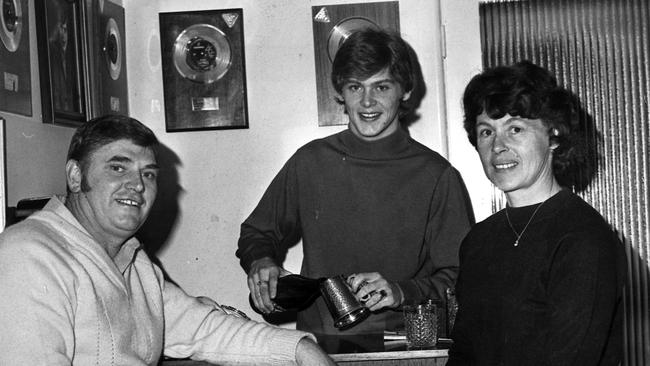
“I’ve always been a show off, you know, typical 10 year old kid, I tend to like a bit of attention.”
In an interview in the 1970s, held by the National Film and Sound Archives, Farnham said he had always been a musical child, singing at school and at parties from the age of five or six.
“The song that I used to sing when I was very young, five or six, was a song called *sings* ‘blue star, when you are blue, all I do is look at you’. Great old song and I used to sing that at all the parties”.
“I never knew the words, I just used to hmm it, hum it, and I used to get through it now and again but that was when I first started.
“The first influence I ever had, I’ve never told anybody this, was Paul Anka with Diana (sings) ‘Oh, stay by me, Diana’”.
“When I was about seven I think, in England, I had a plastic guitar which I brought to Australia and lost. And I used to try to play this and of course the Everly Brothers were very, very big at that time and I tried to sing like that.
“But you know I was very young…Tommy Steele had I think the main influence on me, he still has a big influence on me at this stage.”
PERSONAL LIFE
Farnham’s wife, Jillian, was a dancer.
The pair met when they were both working on the musical Charlie Girl in 1971. “Jillian was coming out of the theatre, and I saw her, and at that stage she had very long dark hair down to her very petite bum and I was history,” Farnham told 60 Minutes in 1993.
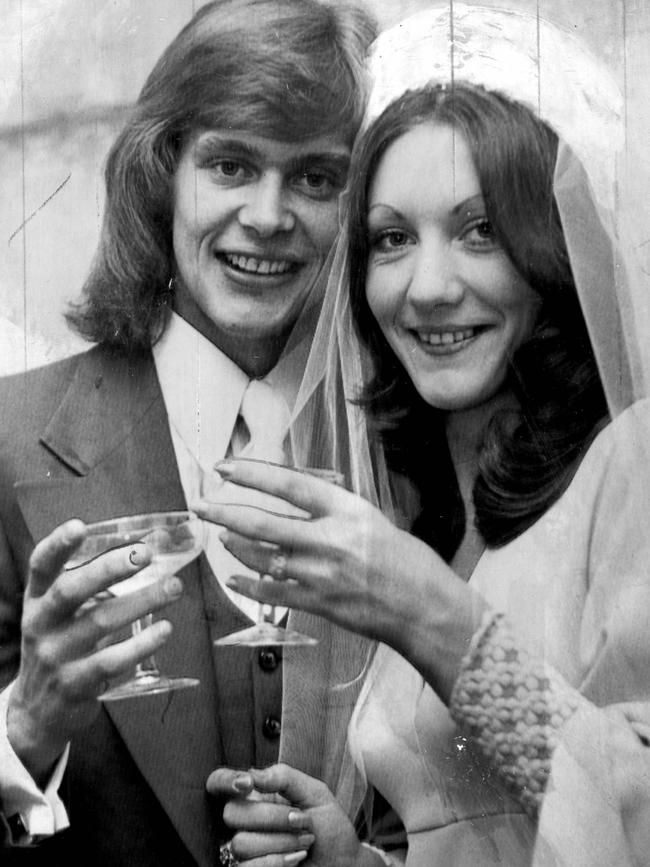

“It took me about three months to get a kiss and we started to go out together and it naturally happened.” The couple have two sons, Robert and James.
John and Jill live on their farm near Bendigo.
FORAY INTO MUSIC
According to a biography on the John Farnham fan club website, Farnham and two school friends formed a band called The Mavericks which played regular school concerts at the Dandenong Town Hall.
He was later asked to audition for the band Strings Unlimited and impressed with a rendition of House of the Rising Sun and was invited to join the band.
Farnham worked as a plumber’s apprentice and part-time musician before landing his first recording deal in 1967.
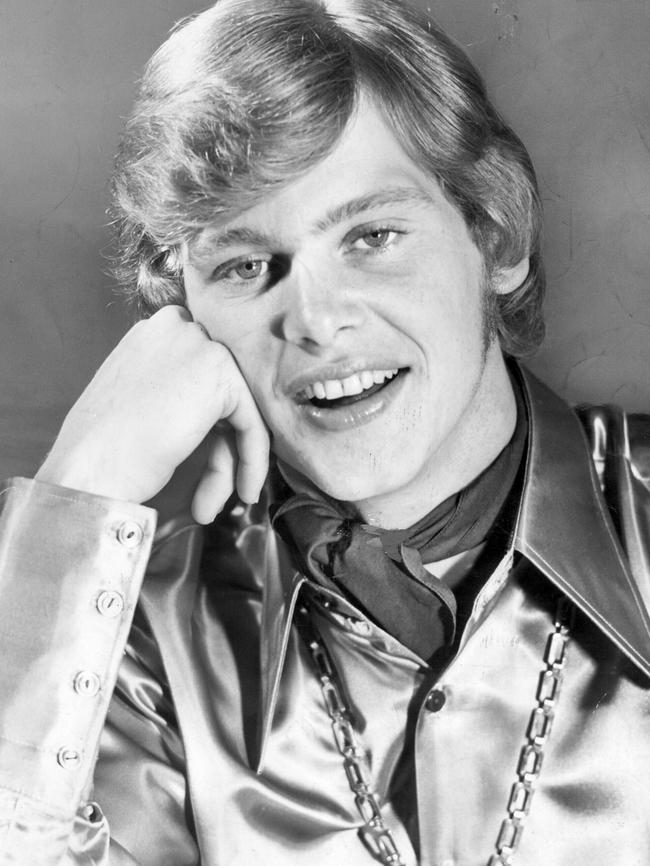
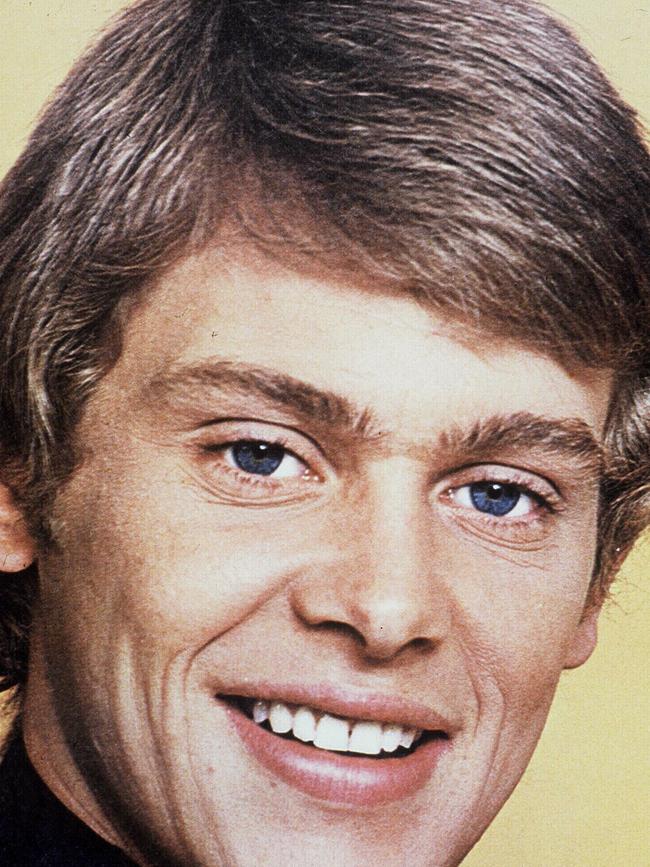
Despite his ties to Melbourne, Farnham’s first appearances as a solo artist were actually in Adelaide. In 1967, Farnham was playing a gig in Cohuna, Victoria with Strings Unlimited, backing singer Bev Harrell.
As he explained in a 1970s radio interview held by the National Film and Sound Archives, during rehearsals for the show, Farnham was approached by Darryl Sambell, an Adelaide friend of Harrell’s who saw the raw potential in the young pop idol and offered to manage him.
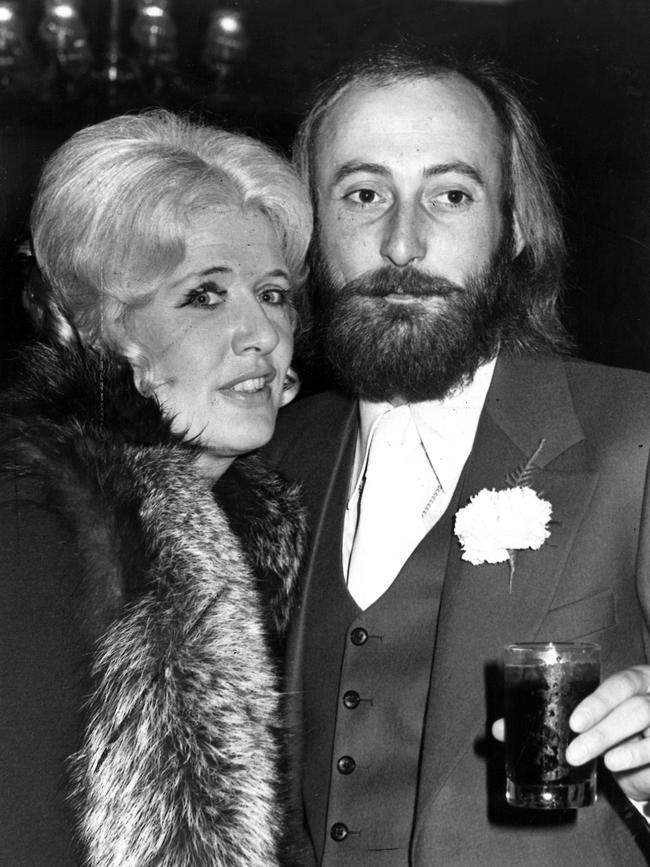
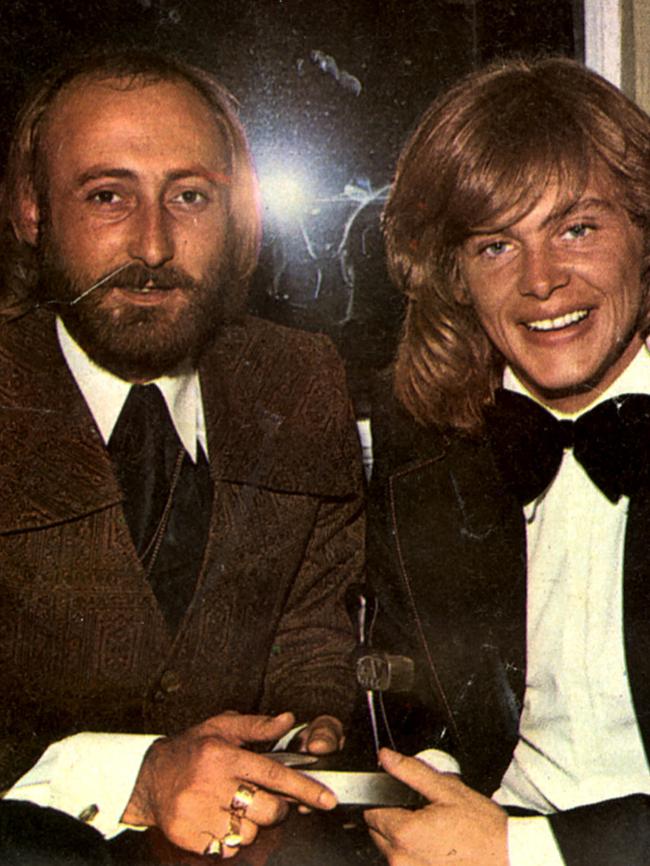
Being more familiar with the SA music scene, Sambell booked Farnham’s first gigs at Adelaide venues such as the Princeton Club and St Clair Recreation Centre.
Farnham was billed as ‘Johnny Farnham’ for the first 12 years of his career, later changing his stage name to John.
JOHN’S BIG BREAK
He released his first hit, Sadie the Cleaning Lady, in 1967 aged just 18 after signing with EMI/Columbia.
The song, written by the US songwriting trio behind Lesley Gore’s You Don’t Own Me, among other hits, spent six weeks at the top of the charts.
It was the highest-selling single in Australian history for the best part of a decade, until finally being eclipsed by the novelty football song Up There Cazaly in 1979.
According to the biography on the John Farnham fan club website, Sambell was not a fan of the song because of its “persistent lyrics”, but later proved instrumental in orchestrating many of the clever marketing strategies that helped ‘Sadie’ find mainstream success.
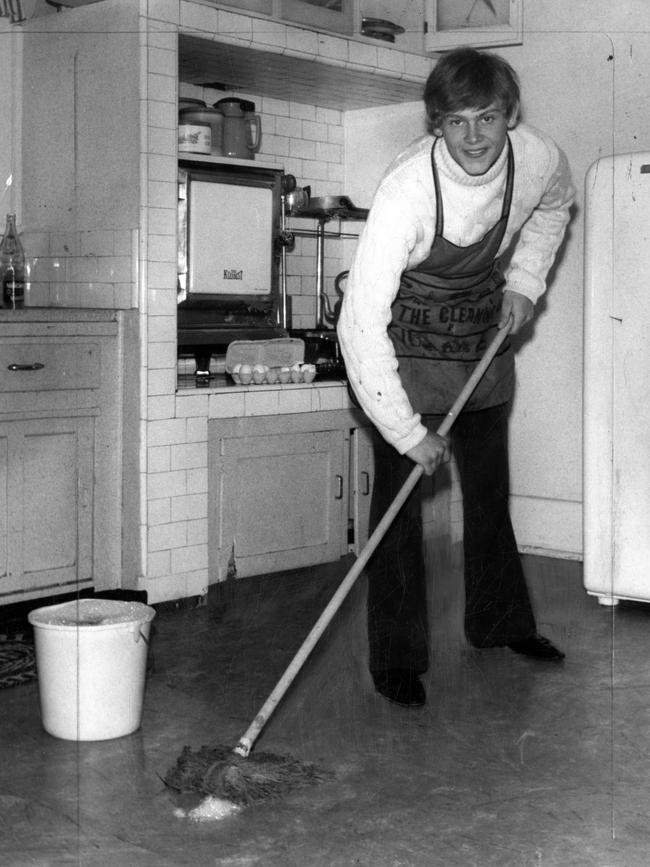
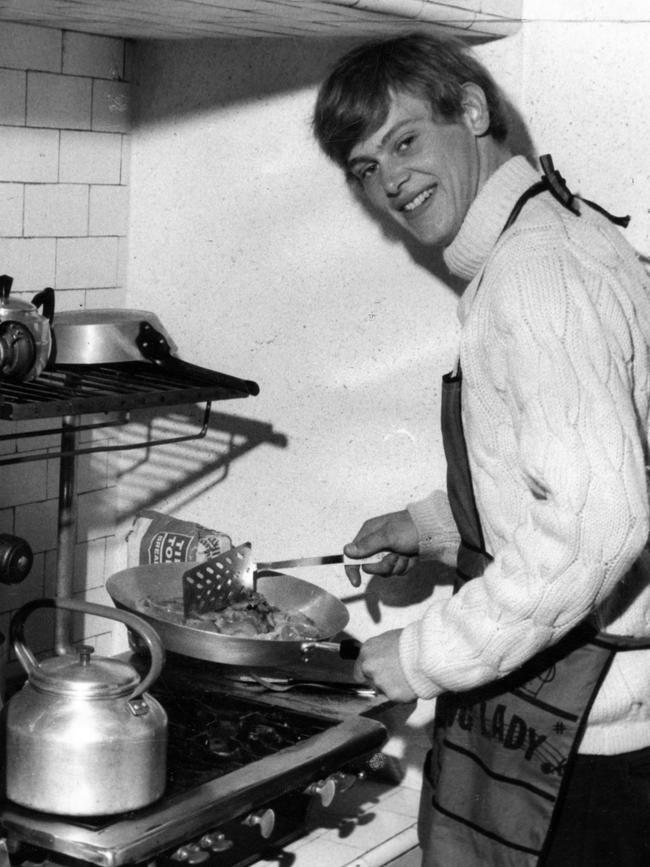
“Publicity stunts included advertisements placed in newspapers for cleaning ladies, and an Electrolux vacuum cleaner making an appearance at the launch”.
“A huge success, ‘SADIE’ reached No. 1 in December and stayed there for 6 weeks, remaining on the chart for 23 weeks.”
After hitting the big time with his first single, a 19-year-old Farnham embarked on a national tour with other popular contemporary artists including Col Joye and Little Pattie.
In 1968, during the the tour, Farnham gave an interview for the Channel 7 current affairs show 7 Days - an artefact the National Film and Sound Archives says shows just how popular the very young Farnham had suddenly become in Australia.
“For a generation of Australian teenagers, Johnny Farnham was their pop idol of choice and this clip ably demonstrates that early in his career, Farnham attracted the attention of fans in much the same way as The Beatles.
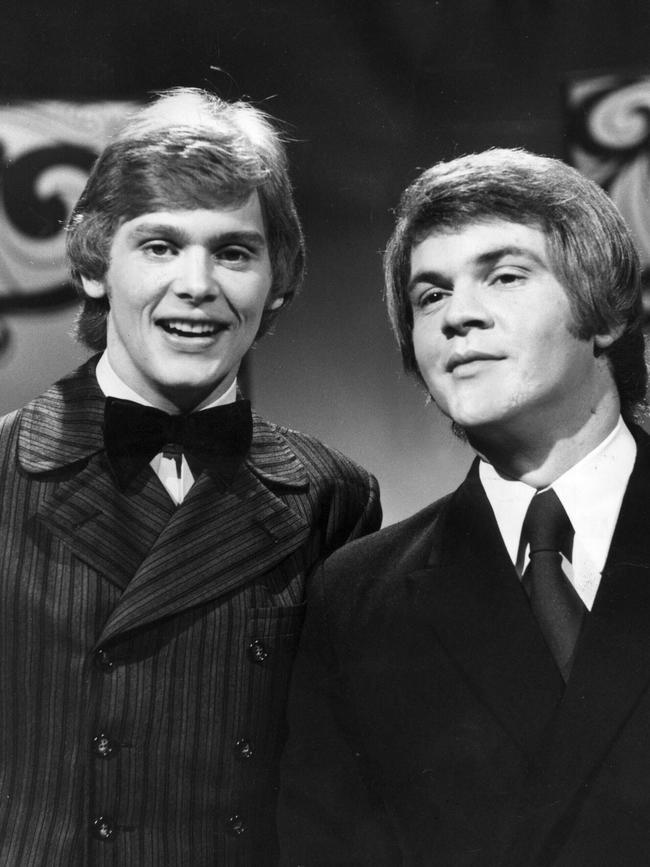
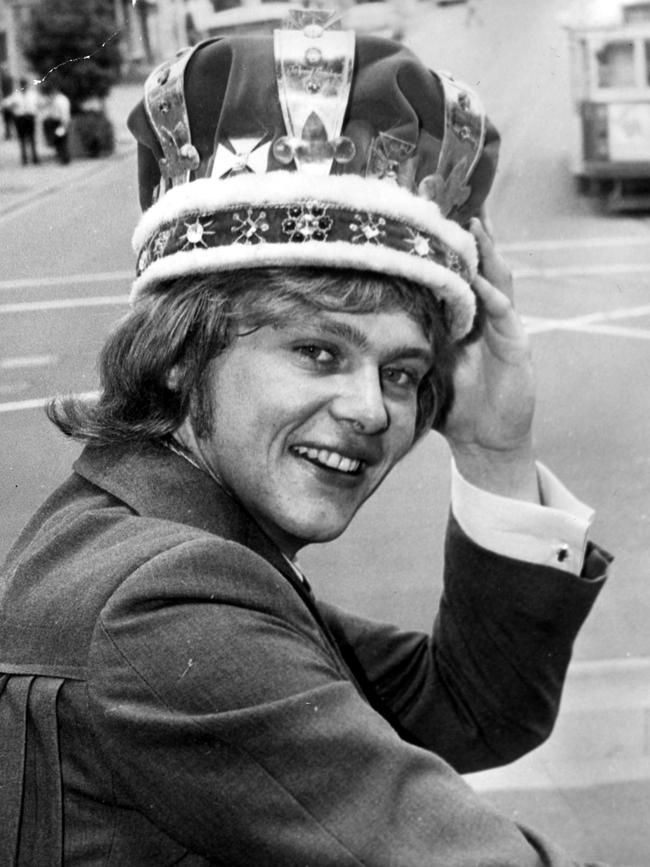
“The interview shows that, despite all the adulation, Johnny is still only a teenager himself. The elevated camerawork during the interview, whether intentional or not, makes him look diminutive and innocent, which was largely his appeal at the time.”
As The Herald Sun reported in 2021, Farnham, too, grew to dislike the hit that catapulted him to national stardom, playing only a shortened version of the song if audiences demanded it.
In 2020, at a show in Mount Isa, Farnham changed the lyrics of the song to ‘Sadie the bloody cleaning lady’, joking ‘this is going to end up on the bloody internet isn’t it?’ (which it did).

But as Cameron Adams noted in The Herald Sun, his objection to the song was largely tongue-in-cheek with Farnham admitting in 2017 “I actually don’t mind signing the song. I love the song. If it wasn’t for the song I wouldn’t be here. It’s just not the best song I’ve ever recorded”.
Farnham had a hugely successful 1969 scoring his second top 10 hit with a cover of Harry Nilsson’s “One”, which made it to number four on the charts, while the non-album single Comic Conversation charted at number 10.
He made it to number one for the second time with his cover of Hal David / Burt Bacharach classic Raindrops Keep Fallin’ On My Head.
Farnham was also named “King of Pop” and held the title for five years running.
THE HITS DRY UP
Farnham appeared in several plays and musicals during the 1970s.
He played the lead in Dick Whittington and His Cat in 1970, performed in Charlie Girl in 1971 and Pippin in 1974 alongside Colleen Hewett.
But his recording career had begun to falter and despite releasing several albums early in the decade, he struggled to reach the dizzying heights he had managed to reach as a teenage pop idol in the 1960s.
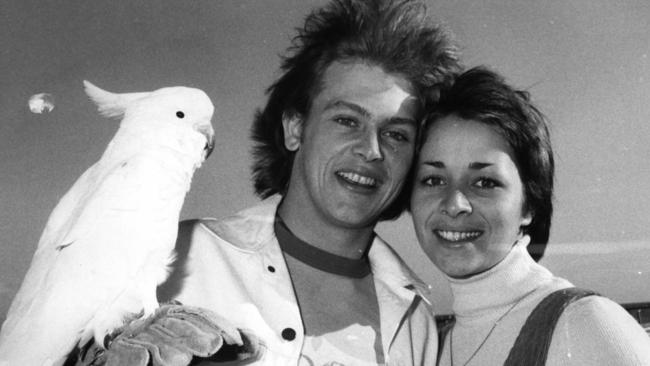
He went three years without a top 10 hit before reaching number four with the non-album single Rock Me Baby in 1972. The same year, he got to number 12 with Don’t You Know It’s Magic from the album Hits, Magic & Rock ‘N Roll.
But greater success proved elusive and, despite regular appearances on television variety shows and benefit concerts, Farnham’s career lost direction and momentum.
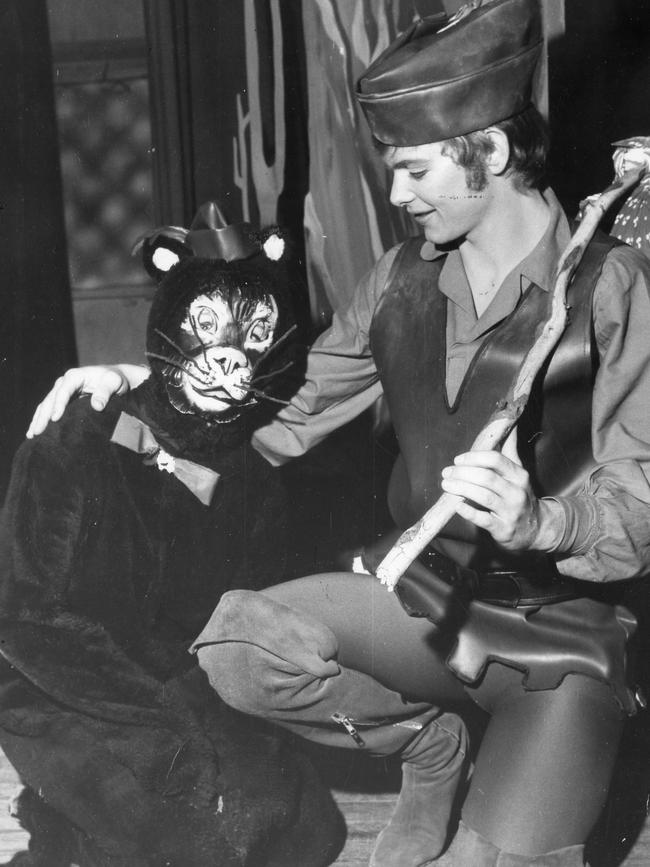
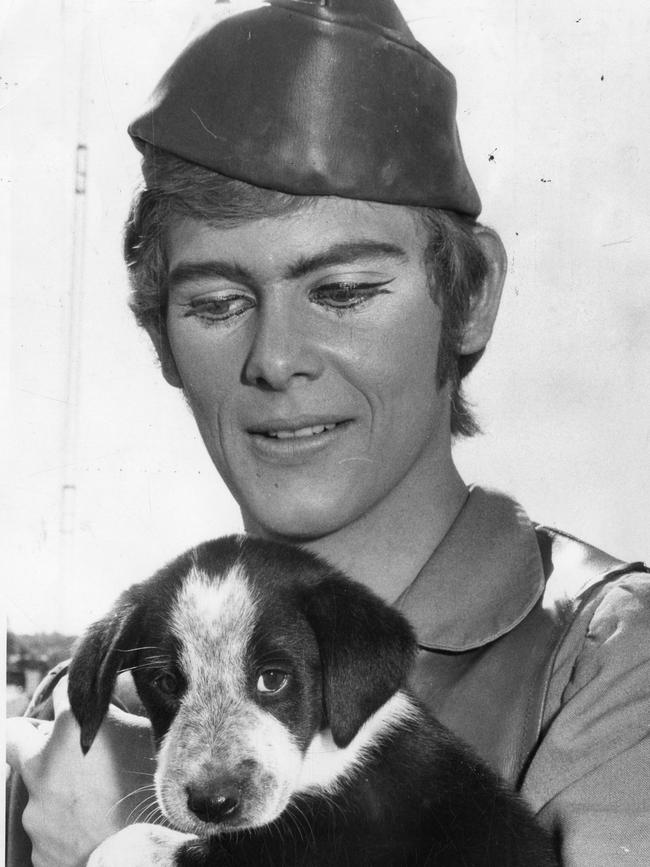
In 1976, after nine years and 11 days, Darryl Sambell, announced he was parting ways with Farnham, telling The Bulletin he was tired, in poor health and that “every goal had been reached for Farnham in this country”.
GLENN WHEATLEY
In the late 1970s, Farnham reconnected with his old friend, musician turned manager Glenn Wheatley, who had also been a client of Darryl Sambell during his time as a member of the band Masters Apprentices.
Wheatley took Farnham under his wing at the same time as he was managing the Aussie group Little River Band, which had become hugely successful in the US.


As Wheatley told the Sydney Morning Herald in 2003, Farnham’s career was languishing when he went to see him at the Tweed Heads RSL in December, 1974.
“I went along to see him and there were only a couple of hundred people in this cavernous room. He was working with the worst four-piece band you’d ever heard. It broke my f...in’ heart - I nearly f...in’ cried,” Wheatley told the SMH.
“Here was this man with the most beautiful voice in Australia - my old friend - and the band couldn’t even keep time,” he said.
“He was wearing this hideously bad suit and tie and after the show I said, ‘Johnny, we’ve got to start again.’
“So I got the suit and tie and I dropped them in the slops bucket with all the other shit and we just started again. Just started again.”
Farnham signed to Wheatley’s own label to record his first solo album in half a decade, 1980’s Uncovered. As the NFSA writes, the album was not the hit either hoped for, but spawned a number 8 hit with a cover of The Beatles song Help.
THE LITTLE RIVER BAND
Farnham’s new relationship with Wheatley brought about new opportunities. In 1982, he replaced Glenn Shorrock as lead singer of LRB after Shorrock decided to leave the band.
But it was a difficult and dysfunctional marriage with Farnham at the helm, and the band failed to achieve the success it had achieved with Shorrock.
After four years, three albums, three US tours and several line-up changes, Farnham left LRB to pursue his solo career.
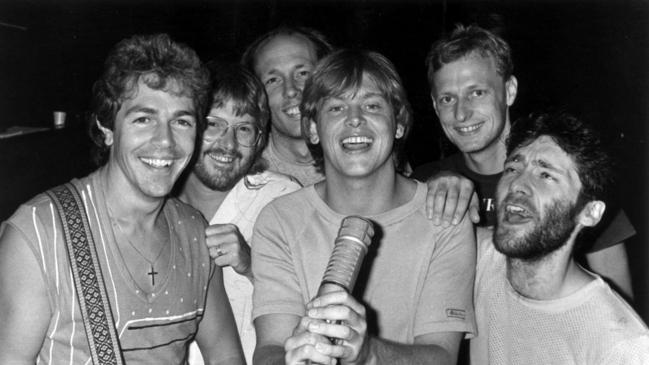
In interviews, Farnham said he found it difficult to find his place in a band dynamic after spending so long as a solo artist.
“I loved being there -- don’t get me wrong. But they were pretty set in their ways,’’ Farnham told The Herald Sun in 2011.
He says also felt the pressure to live up to the band’s early success
“I was putting myself under a lot of pressure, because I was up front and had to be the most liked,” he told the Canberra Times in 1986.
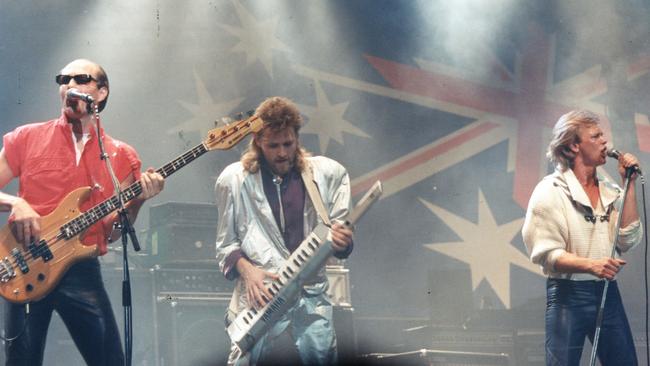
“There was a lot of pressure because it wasn’t, perhaps, working as it should, although there were other contributing things like the membership changes and perhaps the material.
“I figured if I am going to do that to myself, I’ll do it for 100 per cent of the reasons and decided to leave and make a solo album.”
Asked by 60 Minutes reporter Jeff McMullen in 1993 if Wheatley had erred in asking him to join the band, Farnham said: “No, I don’t think I could do what I’m doing now if it wasn’t for my time in Little River Band.
“It grew me up. It really grew me up, you know?
“It made my attitude to what I do get serious.”
WHISPERING JACK
As The Sydney Morning Herald reported, Farnham had not done well out of LRB and, as he told The Daily Telegraph in 2011, “some bad decisions”, including starting a restaurant in Melbourne had put him and wife Jill “on the bones of our arse”.
“I had to sell everything, I had to sell my house and my car and we didn’t have terribly much to begin with,” Farnham told 60 Minutes.


But Wheatley still believed in his friend’s incredible gift, even though, as Jeff Apter wrote in 2016, “Farnham’s name was music industry poison” and “no record label would touch him”.
Wheatley mortgaged his house to fund the recording of Farnham’s comeback album, Whispering Jack, which was produced in the house he was renting at the time.
“No one knew and no one cared we were doing Whispering Jack,” Farnham told The Daily Telegraph.
“This originally came out on Wheatley Records and then we were picked up.
“When we finished the album, I was on the couch in the foetal position for the next two weeks. What have I done? What if Wheatley loses his house, what if I can’t make a living?”
The phenomenal, unmatched success of the album is history now.
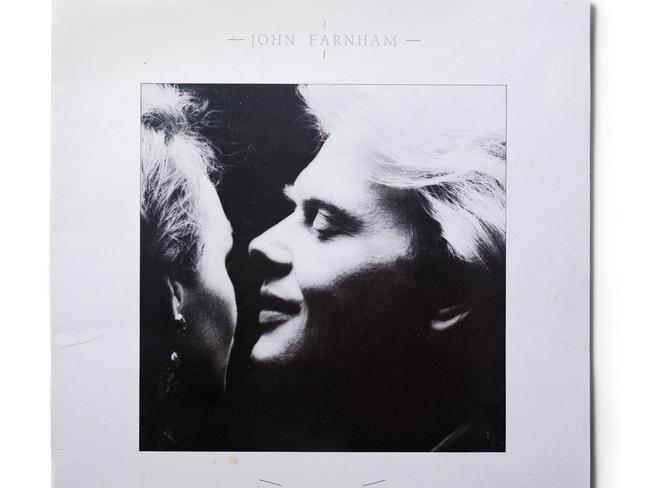
But as Jane Gazzo writes, in an extract from her 2015 book John Farnham - The Untold Story, published in The Herald Sun in 2015, the making of the album took exacted a heavy toll on Farnham, whose entire career was hinging on its success, later admitted he had suffered “panic attacks, the whole box and dice”.
“The singer had put everything he had into Whispering Jack and it had almost finished him. With the album complete, but not yet released — and with his career on a precipice — he was crippled by self-doubt and fear,” Gazzo wrote.
YOU’RE THE VOICE
And while You’re the Voice remains one of Farnham’s biggest hits, and spent seven weeks at the top of the charts, its success was also not at first assured.
In fact, as Cameron Adams revealed in 2018, the song’s British songwriter, Chris Thompson took some convincing to let Farnham record the song in the first place.
“I got a call from my publisher saying ‘This guy called John Farnham from Australia wants to record You’re the Voice,” Thompson recalled.
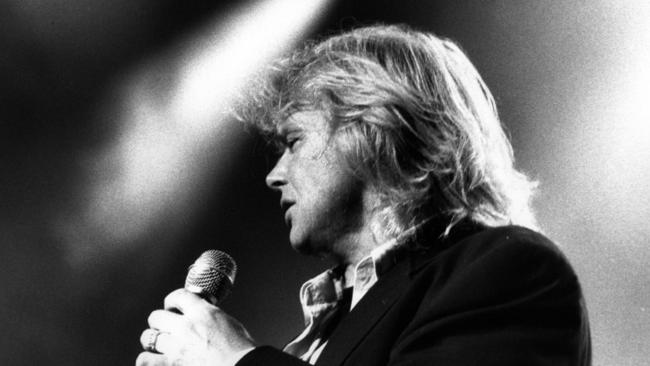
“I said ‘You’ve got to be joking! He’s not doing it’. I’d grown up in New Zealand and all I knew about John Farnham was Sadie the Cleaning Lady. I told my publisher he’s like a joke in Australia and absolutely no way is he recording You’re the Voice and put the phone down.”
Thompson’s reservations went away after listening to the demo.
“It was fantastic,” he said.
And yet, Farnham and Wheatley still had to work for their record.
“It wasn’t instant,” Wheatley told Adams in 2018.
“We really had to work it. Solid TV appearances and finally radio stations started playing it. Once that kicked in there was no stopping it.”
Whispering Jack went on to sell close to 1.7m copies and topped the charts for a staggering 27 weeks. It remains the highest-selling album by an Australian artist of all time.
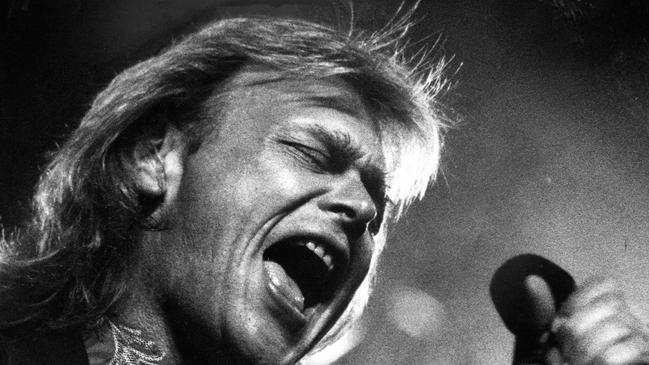
“John ‘repaid the debt’, as he always called it, by publicly and privately standing by me through my tough times,” Wheatley said.
“John’s support, coming from such a well-respected person, not just within the Australian music industry but with the Australian public at large, was an incredible boost for me. He refused to let me drown.”
Wheatley died in February 2022 at the age of 74, following complications from Covid-19.
THREE DECADES AT THE TOP
The record-breaking success of Whispering Jack not only silenced Farnham’s harshest critics and cemented his place among Australian music royalty.
It also kicked off an extraordinary, three-decade long run of chart successes, including nine more top 10 albums, six of them number ones.

They included 1988’s Age of Reason, which spawned a number one hit of the same name and Two Strong Hearts, which made it to number three on the charts.
Farnham’s phenomenal success also meant that, a decade later, when Wheatley found himself in dire straits, financially, Farnham was there to return the favour.
GIVING BACK
In 1993, when Australia was in the grip of the worst drought on record, Farnham performed at the first Rural Aid appeal at the Gympie Country Music Muster, an event that has gone on to raise millions of dollars for rural communities and causes.
Farnham has continued to support the organisation, performing at Hay Mate drought relief concerts in Tamworth in 2018, and Melbourne in 2019, with a host of other Aussie music stars.

“We’ve all seen the footage on the news,” Farnham said ahead of the 2019 concert.
“It’s an emotional time. We’re talking about generations of farmers losing their properties or animals because of drought, and in some cases losing their lives or hurting themselves.
“We have to try and make a dent in it and throw a lot of money at this thing.”
Farnham and Wheatley have also been big supporters of the Buy a Bale program which has raised more than $3m to help drought-affected families buy hay to feed their livestock.
In 2020, he took part in bushfire relief concert Fire Fight Australia in Sydney alongside Olivia Newton-John, Daryl Braithwaite, Guy Sebastian, Jessica Mauboy and Icehouse.
The show was Farnham’s last public performance before his cancer diagnosis.
FAMOUS COLLABORATIONS
Farnham has collaborated with some of the best musicians in the business in his long career.
In 1997, he scored a number three hit with Human Nature with their single Every Time You Cry.
The following year he joined Olivia Newton-John and Anthony Warlow for The Main Event, a national tour of Australia that also led to the release of a live album of the same name.

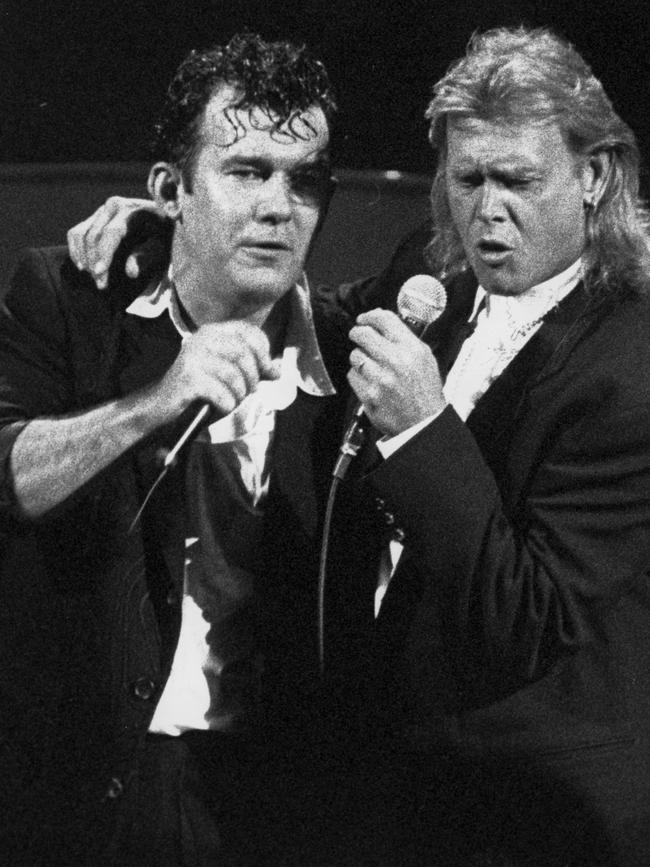
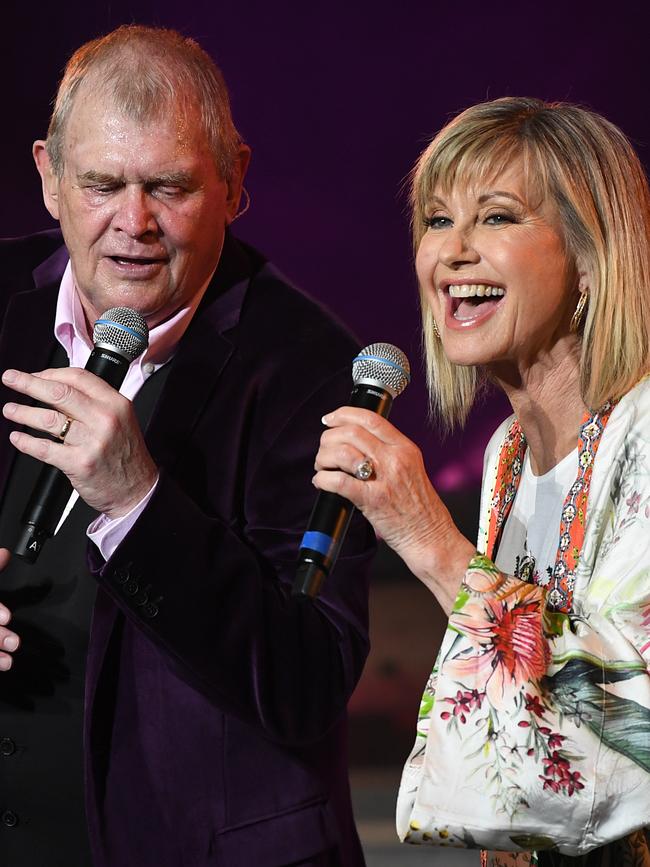
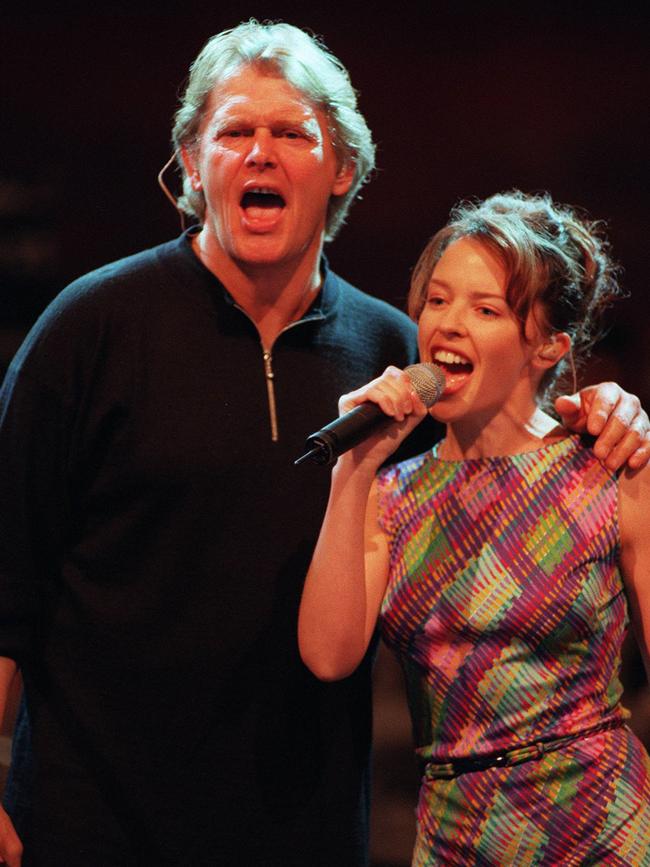
And in 2005, he teamed up with Tom Jones to play a 10-show tour of Sydney, Melbourne, Perth and Brisbane, which also led to the release of a live show album that was certified platinum.
Farnham has also shared the stage with fellow Australian icons such as Jimmy Barnes and Kylie Minogue and international stars including Celine Dion, Ray Charles and Stevie Wonder.
‘LAST TIME’ TOUR
In 2002, Farnham announced a national tour, which he said would mark his retirement from major touring.
Named after his studio album The Last Time, the tour ran from November 2002 to June 2003 and saw Farnham perform to 430,000 fans over 95 performances. The tour reportedly reaped $53m, The Daily Telegraph reported.
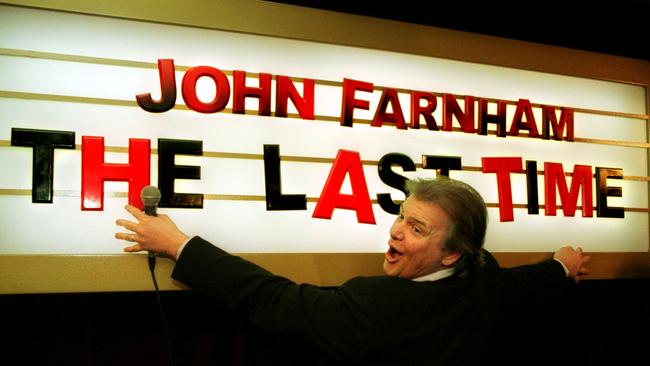
In 2004, after Farnham announced a series of concerts with Tom Jones, a disgruntled fan lodged a complaint with Australia’s consumer watchdog the ACCC claiming concert goers had been led to believe the Last Time Tour was their last chance to see Farnham in concert.
But Farnham’s manager, Glenn Wheatley denied Farnham ever said he planned to retire and that the Tom Jones tour was a limited series of shows, not a national tour.
The ACCC said it would be taking no action.
Apart from select performances, including at the Closing Ceremony of the Commonwealth Games in Melbourne in 2006, Farnham remained retired from touring until 2009, when the 59-year-old announced a new national tour declaring he was “tired of being retired”.

He toured again in 2011, marking the 25th anniversary of the release of Whispering Jack.
In 2018, Farnham reiterated that he had only ever wanted to put the brakes on the gruelling demands of major touring, not stop performing for good.
“I never said I was going to retire, I just said I was never going to do those big (indoor) venues again under my own steam,” Farnham said.
“I used to find it really stressful, I didn’t want to push it and wind up playing to crickets and frogs, so I slowed down for a few years.”
SHOCK DIAGNOSIS AND RECOVERY
In 2011, 25 years after Whispering Jack, Farnham told The Daily Telegraph’s Kathy McCabe his many decades on stage playing loud arenas had taken its toll on his hearing and he had taken to using hearing aids.
“The repertoire is getting wider as am I; the hair is the only thing that got thinner. And now I can do hard-of-hearing jokes,” Farnham joked.
But his health took a major turn for the worst after a shock diagnosis of mouth cancer in 2022.

In a statement, released by Glenn Wheatley’s wife, Gaynor, the Farnham family said: “Cancer diagnosis is something that so many people face every single day, and countless others have walked this path before me. The one thing I know for sure is that we have the very best specialist healthcare professionals in Victoria, and we can all be grateful for that. I know I am”.
The news prompted an outpouring of love from Farnham fans around the world, including the Prime Minister and singers Kate Ceberano, Richard Marx and Paul Stanley from KISS.
Farnham underwent a marathon 12-hour surgery in Melbourne in August to remove a cancerous tumour, an operation the family said was “successfully completed”.
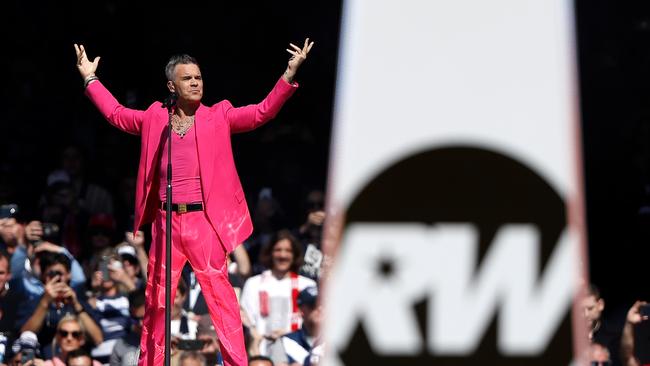
At the 2022 AFL Grand Final in September, British pop star Robbie Williams paid tribute to the beloved Aussie entertainer with a rendition of You’re the Voice, which he called “the unofficial national anthem of Australia”.
Farnham’s wife Jill, and sons Rob and James, later said John watched the performance from hospital and was “deeply touched by that very generous gesture”.
In early 2023, a close friend of Farnham’s said he was recovering slowly but surely.
“It is a process, it is slow and steady as she goes. He is going well,” the friend said.
Originally published as You’re the Voice. John Farnham, from Sadie the Cleaning Lady to Australia’s King of Pop



